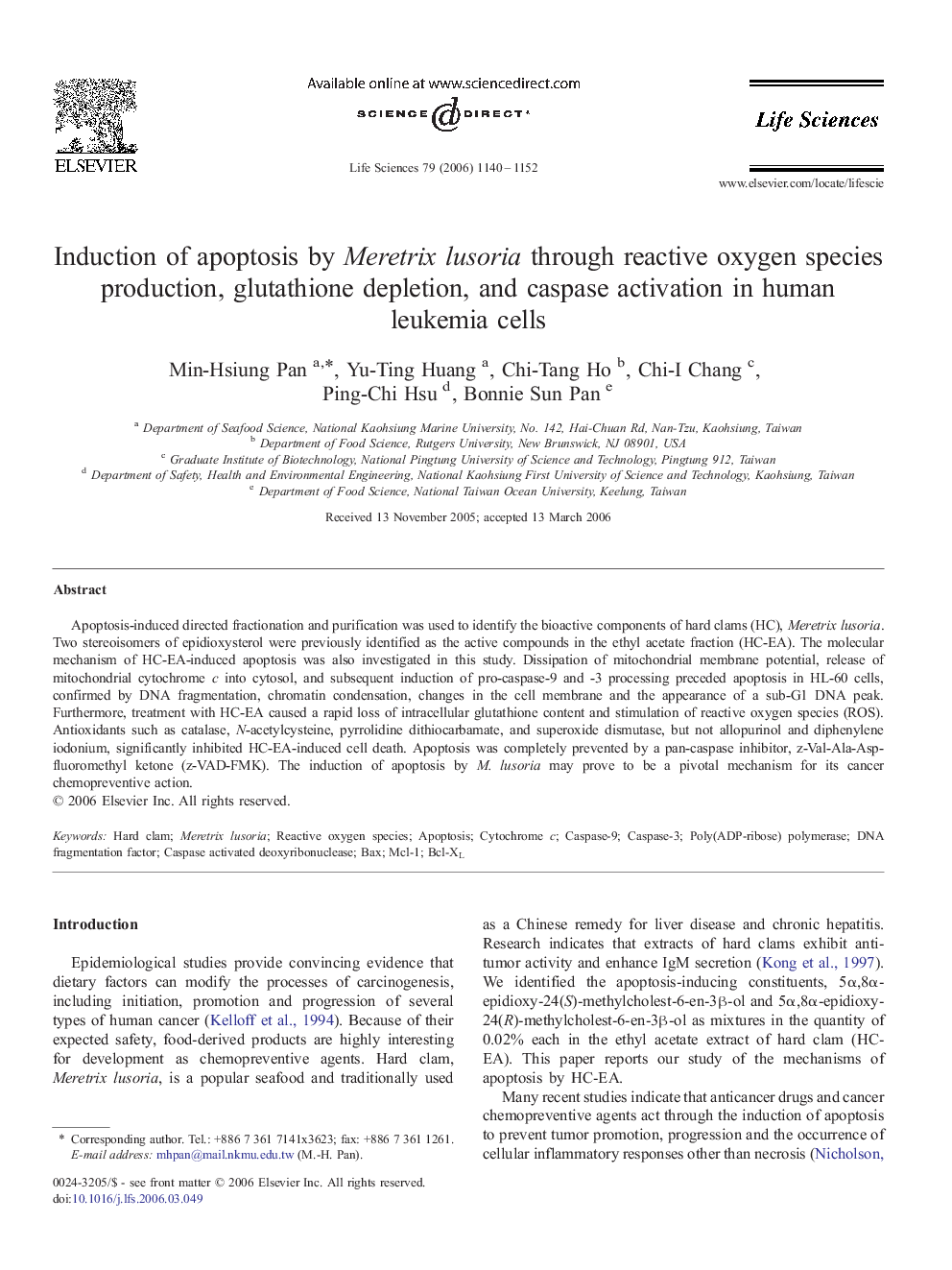| Article ID | Journal | Published Year | Pages | File Type |
|---|---|---|---|---|
| 2554822 | Life Sciences | 2006 | 13 Pages |
Apoptosis-induced directed fractionation and purification was used to identify the bioactive components of hard clams (HC), Meretrix lusoria. Two stereoisomers of epidioxysterol were previously identified as the active compounds in the ethyl acetate fraction (HC-EA). The molecular mechanism of HC-EA-induced apoptosis was also investigated in this study. Dissipation of mitochondrial membrane potential, release of mitochondrial cytochrome c into cytosol, and subsequent induction of pro-caspase-9 and -3 processing preceded apoptosis in HL-60 cells, confirmed by DNA fragmentation, chromatin condensation, changes in the cell membrane and the appearance of a sub-G1 DNA peak. Furthermore, treatment with HC-EA caused a rapid loss of intracellular glutathione content and stimulation of reactive oxygen species (ROS). Antioxidants such as catalase, N-acetylcysteine, pyrrolidine dithiocarbamate, and superoxide dismutase, but not allopurinol and diphenylene iodonium, significantly inhibited HC-EA-induced cell death. Apoptosis was completely prevented by a pan-caspase inhibitor, z-Val-Ala-Asp-fluoromethyl ketone (z-VAD-FMK). The induction of apoptosis by M. lusoria may prove to be a pivotal mechanism for its cancer chemopreventive action.
